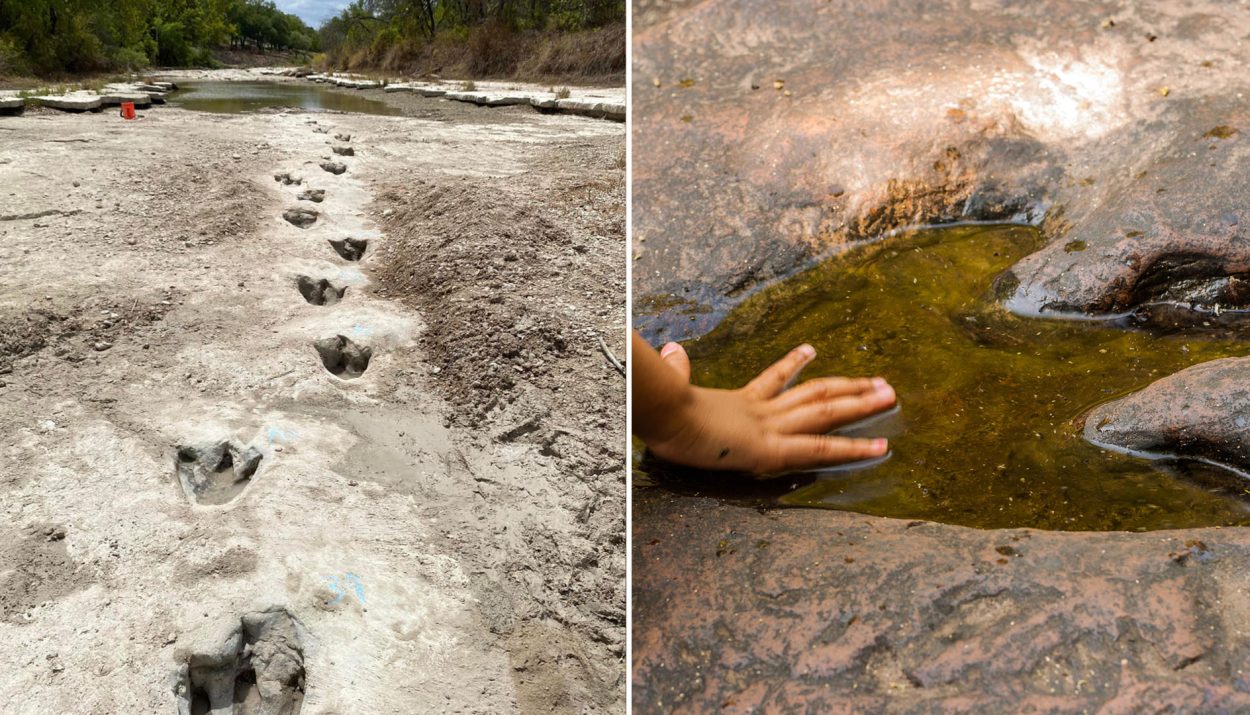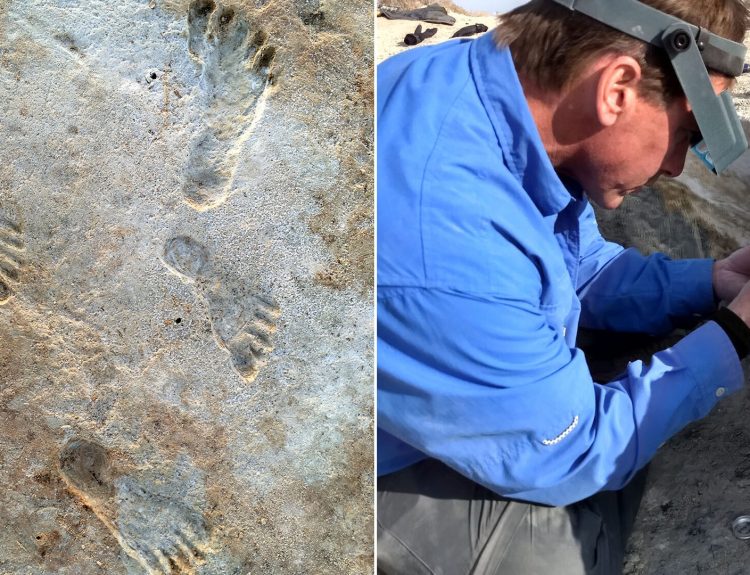Drought in Texas uncovered a remarkable historical find. Dinosaur Valley State Park unveils ancient secrets hidden beneath its riverbed, including 113-million-year-old dinosaur tracks. These remarkable discoveries offer a glimpse into the past and spark excitement among researchers and the public alike.
Treasures Revealed
Drought conditions in Texas have led to an exciting discovery at Dinosaur Valley State Park: tracks left by creatures that lived over 100 million years ago, and had been hidden by a river running through the park.

The tracks on the bed of the Paluxy River are estimated to be around 113 million years old. They are typically submerged under the Paluxy River. However, the drought has caused the water levels to recede, exposing the prehistoric footprints.
Rare Discovery: Drought Reveals Dinosaur Tracks of Acrocanthosaurus and Sauroposeidon in Texas
The tracks primarily belong to the Acrocanthosaurus, a carnivorous dinosaur that stood 15 feet tall and weighed 14,000 pounds.
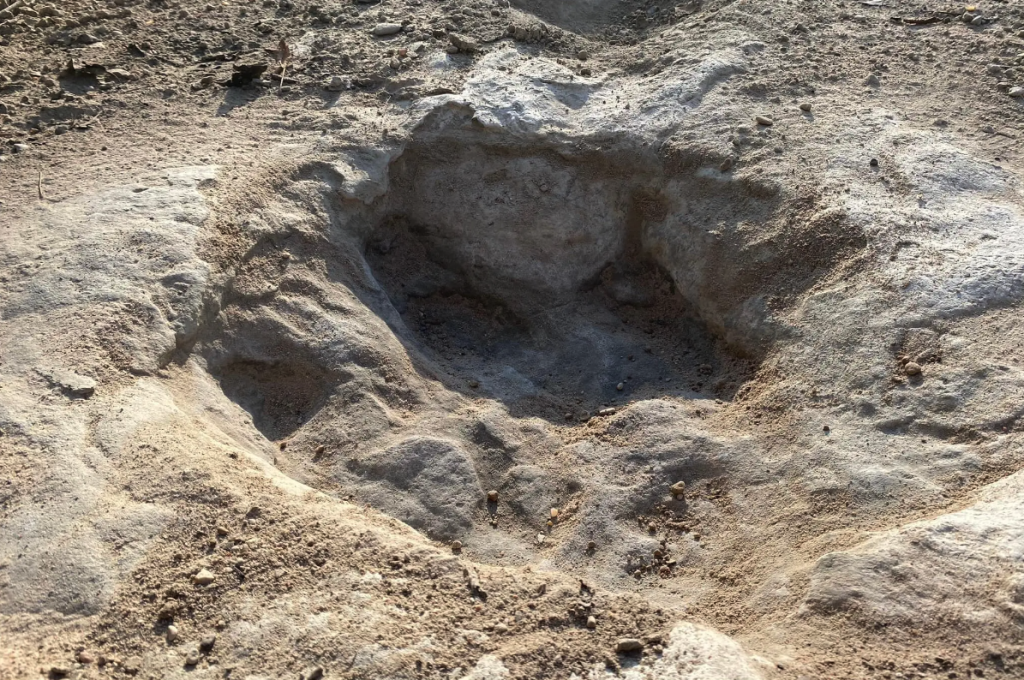
They also include tracks from the Sauroposeidon proteles, the official state dinosaur of Texas, which was a massive creature measuring up to 100 feet in length and weighing around 88,000 pounds. The exposed tracks provide a unique opportunity for researchers to study and document these ancient imprints.
Dinosaur Tracks Amaze Researchers with Unprecedented Detail
Louis Jacobs, a scientist specializing in ancient animals at Southern Methodist University, describes the footprints as “amazing” due to their depth and level of detail, even showing the toenails of the dinosaurs.
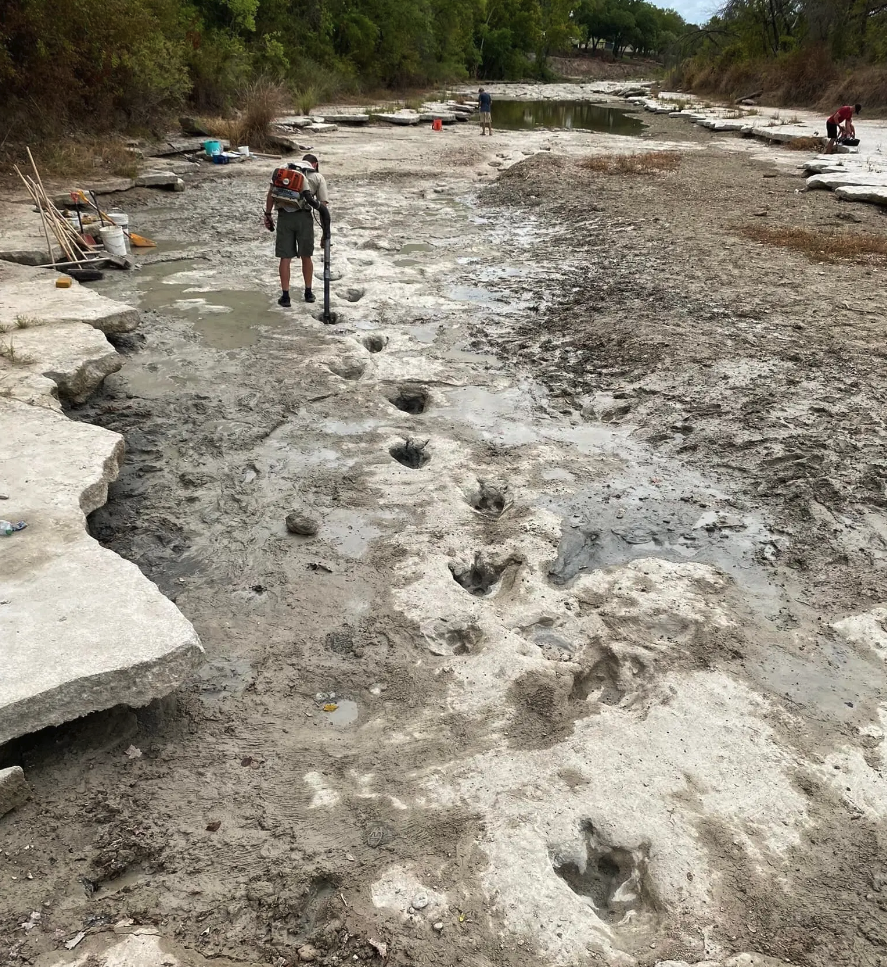
The tracks offer a diverse range of footprints from various species, providing valuable insights into the creatures that once roamed the area. The recent exposure of the tracks, known as the “Lone Ranger trackway,” has revealed approximately 60 of the estimated 140 tracks, including those of the Acrocanthosaurus and Sauroposeidon. This unexpected discovery showcases the remarkable remnants of Texas’ prehistoric past.
Community’s Curiosity Unleashed
As news of the drought-induced discoveries spread like wildfire through the local community, a surge of excitement and curiosity began to take hold. Residents of Beaumont and the surrounding areas, along with tourists from afar, flocked to the Neches River and Dinosaur Valley State Park to witness the remarkable prehistoric footprints.

Children and adults alike couldn’t contain their enthusiasm, and for many, it was an opportunity of a lifetime to see these ancient relics exposed by nature.
A Sense of Unity and Exploration
The unexpected unearthing of these relics not only ignited the flames of curiosity but also fostered a sense of community and unity. As neighbors met at the riverbed and park to share their awe and wonder, a bond emerged among those who shared in the experience.

Volunteers, local historians, and paleontologists collaborated to ensure that these extraordinary remnants of the past were documented, preserved, and shared with the world. They embarked on a mission to create educational programs and exhibitions to offer a deeper understanding of the region’s natural and human history.
Dedicated Preservation Efforts
With the dinosaur tracks, shipwreck, and monorail station exposed to the elements by the drought, preservation quickly became a top priority for the community. In a collaborative effort between local authorities, scientists, and concerned citizens, a comprehensive plan for the protection and conservation of these invaluable discoveries was set into motion.

For the exposed dinosaur tracks, preservationists carefully documented each footprint, using high-resolution photography and 3D scanning technology to capture the intricate details. These records would not only serve as a valuable resource for research but also as a digital archive in case the tracks were once again submerged. Protective barriers were erected around the most fragile tracks to prevent inadvertent damage from enthusiastic visitors.
Revealing Texas’ Hidden Heritage
The drought-induced uncovering of the dinosaur tracks highlights the fascinating connections between Texas’ natural and human history. These findings serve as a reminder of the rich and diverse heritage that lies beneath the surface, waiting to be revealed by the forces of nature.
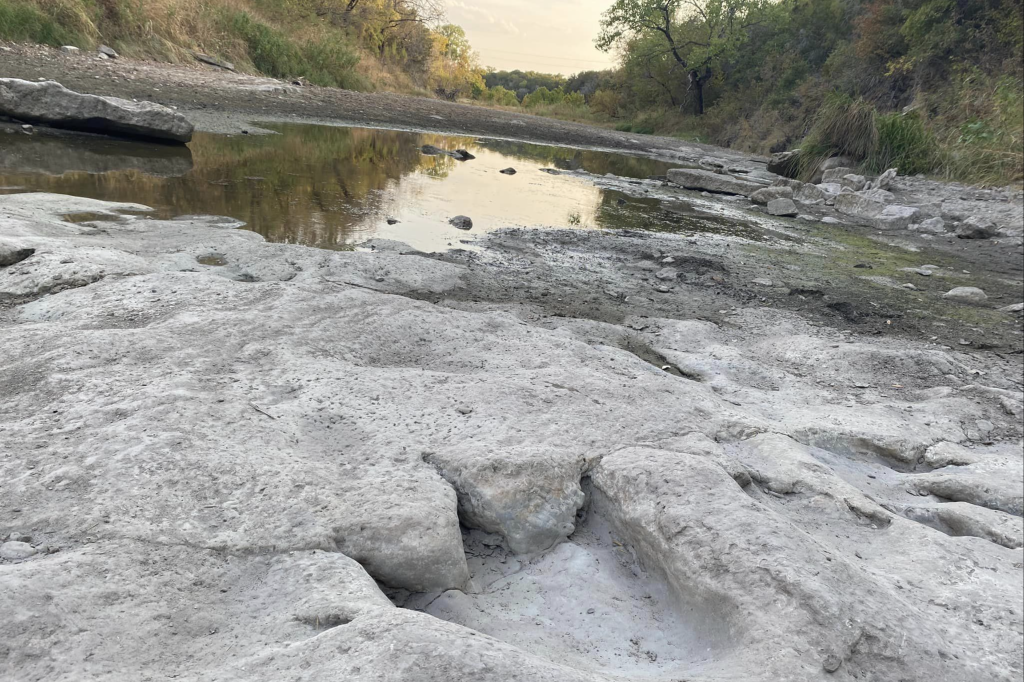
As the drought persists, researchers and volunteers are seizing the opportunity to study and document these significant discoveries before they are once again hidden from view. The uncovering of these ancient footprints and the shipwreck has captured the imagination of both locals and visitors, igniting a sense of wonder and curiosity about the past.

